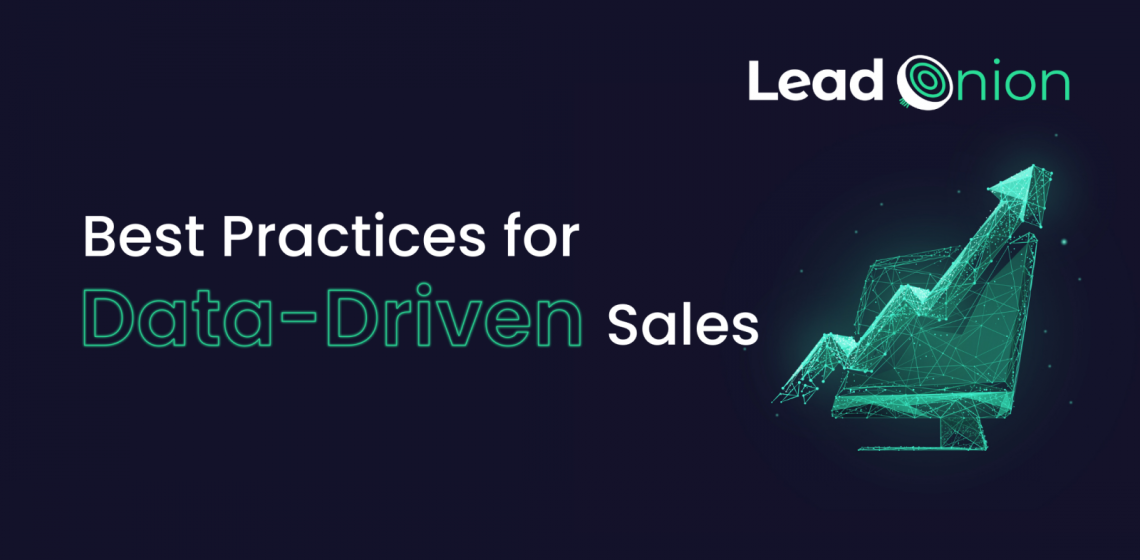In today’s data-rich B2B landscape, it is easier to access data on your buyers than ever before.
From your own first-party data, which your organization collects in-house to second and third-party data provided by external sources, the insights you can collect are limitless.
B2B decision-maker preferences and behaviors have shifted dramatically in recent years with 80% of B2B buyers now expecting to do more business online than before and customers following the same example. (McKinsey and Co 2021)
This new digital shift is all added to the vast amount of data we generate each day. Seed Scientific reports that “the estimated amount of data on the internet created daily will be 463 exabytes in 2025.” For comparison, all the words ever spoken by humans fit into only 5 exabytes.
It is not surprising then, that data is becoming an essential asset for sales processes too.
Whereas traditional sales strategies relied heavily on gut instinct and acumen, modern B2B sales teams must employ more data-driven strategies to effectively identify, prioritize and connect with prospective clients.
The use of data in sales teams is more powerful than ever. For instance, a LinkedIn survey found 56% of sales professionals now use data to target accounts, and there has been a 54% increase in those using sales intelligence tools since 2018 (Forbes, 2021).
So how do you make sense of all that data?
Set your business goals
With the amount of readily available data at your disposal, it is easy to get carried away. You need to be able to strategically focus on what is relevant for your business and be selective with the insights you report on.
Start by asking yourself why you need the data? Knowing what you plan to do with the data you collect can help you to keep only the information that is relevant to your goal, ensuring that your data management software doesn’t get overcrowded and unorganized.
Collecting and reporting on more than you need, will take up not only storage but your sales teams’ time, but with Lead Onion’s unlimited contact storage included in all levels of subscription, you can ensure that all your essential data is stored in a central, accessible location.
Prioritize data protection and security
If you are collecting any type of data you need to comply with data protection regulations, such as the General Data Protection Regulation and the Data Protection Act.
The increasing concerns for data protection and privacy, and the growing public unease around how personal data is being handled by third parties led to the introduction of tighter regulation and control.
The EU’s GDPR impacts not only businesses that operate within the EU, but all businesses that market and sell to customers that reside within the EU. Other nations are likely to follow suit in the near future so it is crucial for your organization to follow all applicable guidelines to ensure the privacy of your leads and customers.
Lead Onion is fully compliant with the most robust international data regulations. All company-level intent data is sourced only from Public and Verified Sources, while all B2B contact data is fully GDPR and CCPA compliant and is sourced from only the most accurate and compliant suppliers on the market.
Break down data silos
There’s a fine line between security and convenience when it comes to accessing your data.
Forrester estimates that 80% of B2B firms struggle to manage their customer insights, which leads to inaccessible data, wasted budget, and disappointing results. More often than not, different departments within an organization rely on different methods of data collecting and organizing, resulting in compartmentalized data.
Data silos not only restrict access to valuable information and insights across departments but also impact the quality of the data.
CIO insights found that around 40% of organizations indicate that scattered information and limited visibility into data impair their sales. Even more concerning, 56% of sales executives are dissatisfied with their ability to offer valuable data-driven insights.
Although created unintentionally, as the data accumulates and continues to grow, organizations face having to invest time into cleansing the data, invest funds into storage solutions and allocate valuable employee time into negotiating access to data silos that contain valuable prospecting information.
Lead Onion’s holistic view of your prospects in a single easy-to-use platform can help your organization put an end to data silos and promote a healthy information flow between your sales and marketing departments. Leads identified by the marketing team are just as easily accessible to sales representatives as qualified prospects are to the Head of Marketing.
Why chose Lead Onion?
Offering complete coverage of 400m business profiles and monitoring intent topics across 50b content signals Lead Onion can highlight high-value content consumption across over 5k sites.
Through 20million intent signals you can monitor competitors, keywords, corporate events, job postings & company growth signals for a broad intent coverage.
With Lead Onion, you get access to the leading, European dataset in the industry, complete with 55m European profiles and 20m direct dials across Europe and the United States.
And with unlimited contact storage included in all levels of subscription, you can ensure that all your essential data is stored in a central, accessible location.
Operationalize Intent with Compliant B2B Contact Data
✅ Prospect at scale using complaint B2B Data
✅ Identify buyers showing intent through 17 intent sources
✅ Fill your marketing funnel with quality data that delivers
✅ Speed up your sales cycle
Download our Data Driven Sales Guide and find out how to get the most out of your data.


